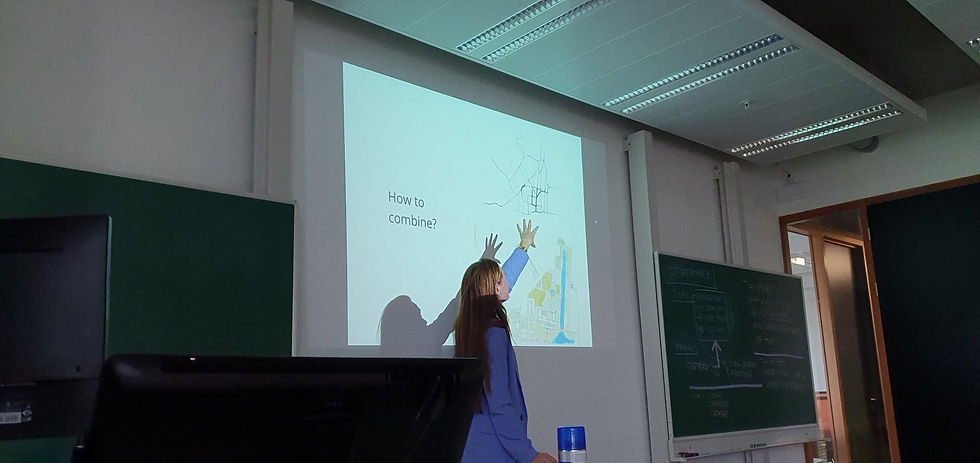Article by Stijn van de Ven
A new academic year, a new study programme; that is the moment where the brand-new master student will find Studio Park. A studio where designing from narrative is fundamental. The assignment: an urban park in the ‘Werkspoorkwartier’, Utrecht, on the premises of the ENECO heating plant. The students are challenged to write their narrative based on the theme of energy. They commence with the question: “how can your park tell a story about (y)our relationship with energy?” The curriculum is rather straightforward; Monday design charrette (some kind of mini-design marathon), Wednesday tutoring and the other days remain available to work on their own. Should be feasible, right?

The introduction into the studio by the teaching team of Sjoerd Brandsma, Seth Wilberding and Sitong Luo
On a side note: I am writing from the point of view of a student assistant whom has participated in this studio last year. I can therefore look at the studio from both perspectives when it comes down to the study pressure. My own impression was that the studio demanded a lot from us as students, but was not impossible. The charrettes were intensive, but generated plenty of ideas, and I had a lot of fun participating in them. It takes time to get into designing from a narrative. In the beginning it seems to deviate from the systematic ‘Wageningen method’ and gives a lot of room for personal opinions and artistic approaches. It is a studio that stands out among all other design studios in terms of approach, which can have an effect on the study pressure. I do not write to convey my opinion on study pressure, but rather as an objective observation of how students experience it now. Through this visual report I would like to take you through the first half of the studio.

Drawing, drawing, drawing. Students put ideas on paper by sketching. According to Seth's instructions, they must use their shoulder, elbow and wrist for this. It's not easy. Brainstorming about the context, current situation and how future spatial concepts connect to it can be more stressful for some than for others. It is therefore quite difficult to get ideas straight away. Yet it doesn't stop the designer in all students from putting something on paper.

At the end of each charrette a 'download' is held where ideas are discussed. This shows how hard everyone has worked and that you can do a lot in a short time. That is also the value of the charrette, to have a moment every week as a 'piling point' to keep yourself on track and to make a start on each part of the design process. On the other hand, it can also give the feeling that you are lagging behind. If you had to work on Reflections last week (because you obviously also have a morning subject), or you have the feeling that you just weren't able to make that design move, you quickly have the idea that the work in the charrette was for nothing.

The halfway point of the studio is marked by the midterm. It is the moment where students can show their progress and receive feedback from their peers. Students are facing challenges in different phases of the individual design, but everyone should have the basis of their narrative, masterplan and sections ready for discussion. The midterm presentation reveals weaknesses within their plans, which they can tackle over the final half of the period. Here they have room to readjust their narrative and masterplan, and create visualisations and an ornamental detail for the park that all build towards the final presentation on the very last day of the studio. These last weeks are the most intensive, but by working together and assisting each other with their struggles, the students can face the working pressure and look back at the studio with a smile!

Comments